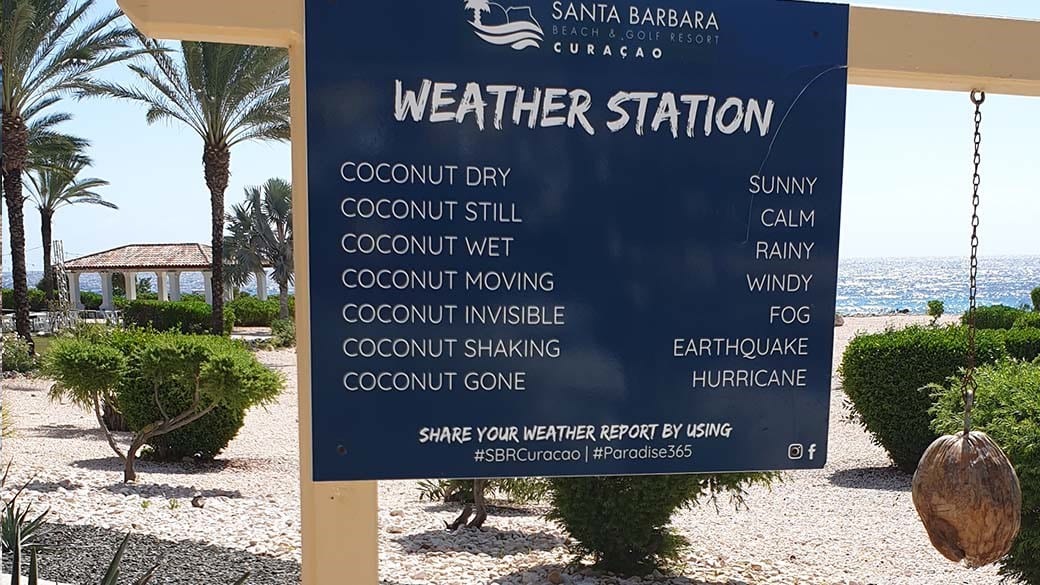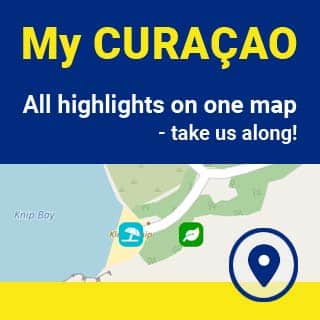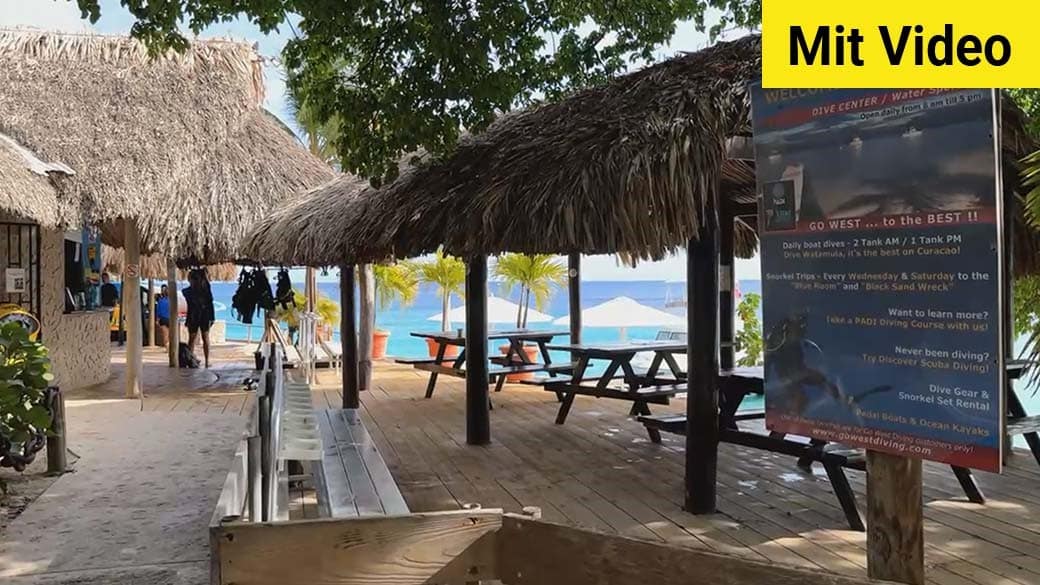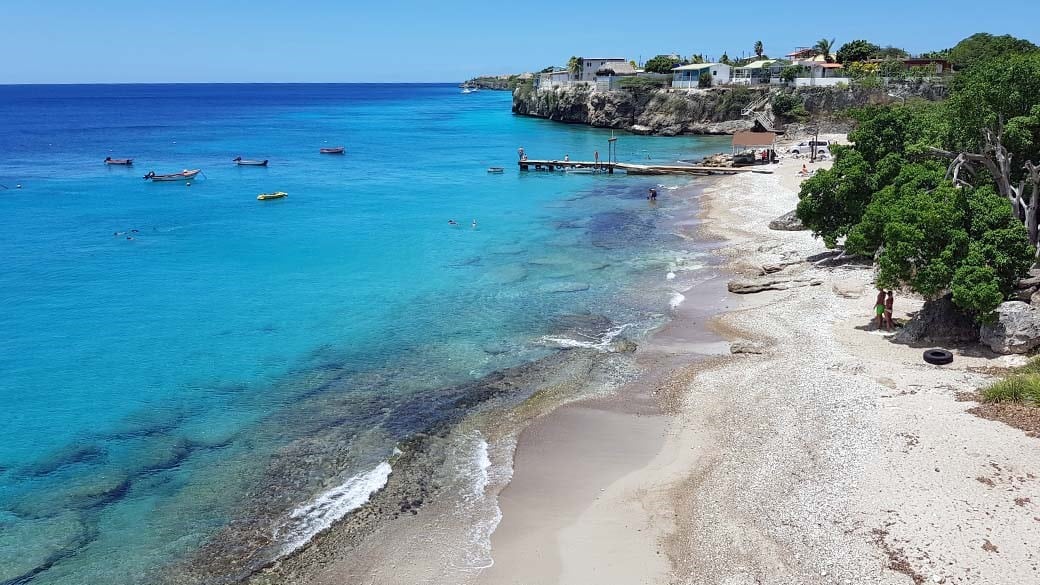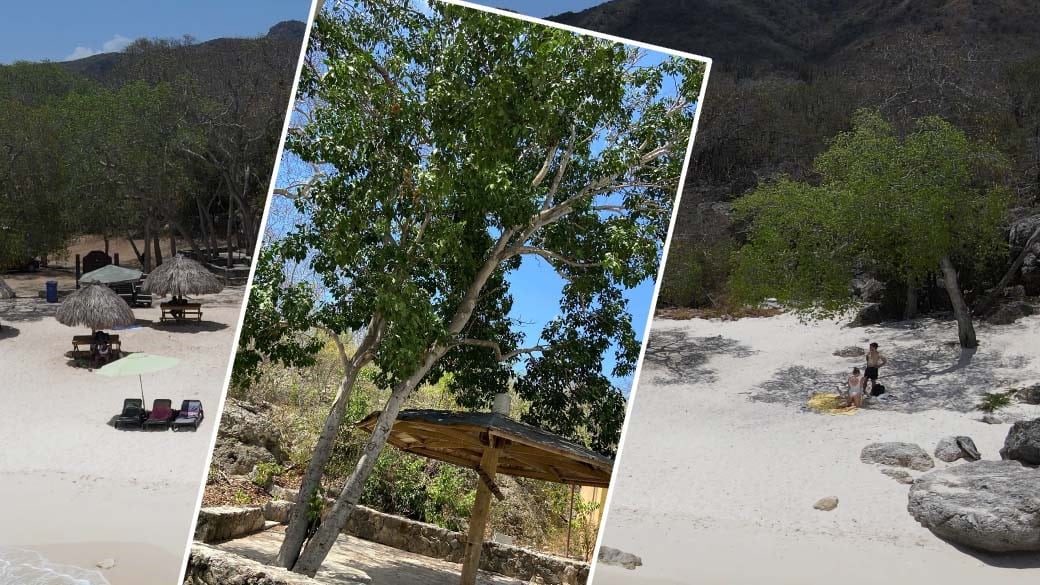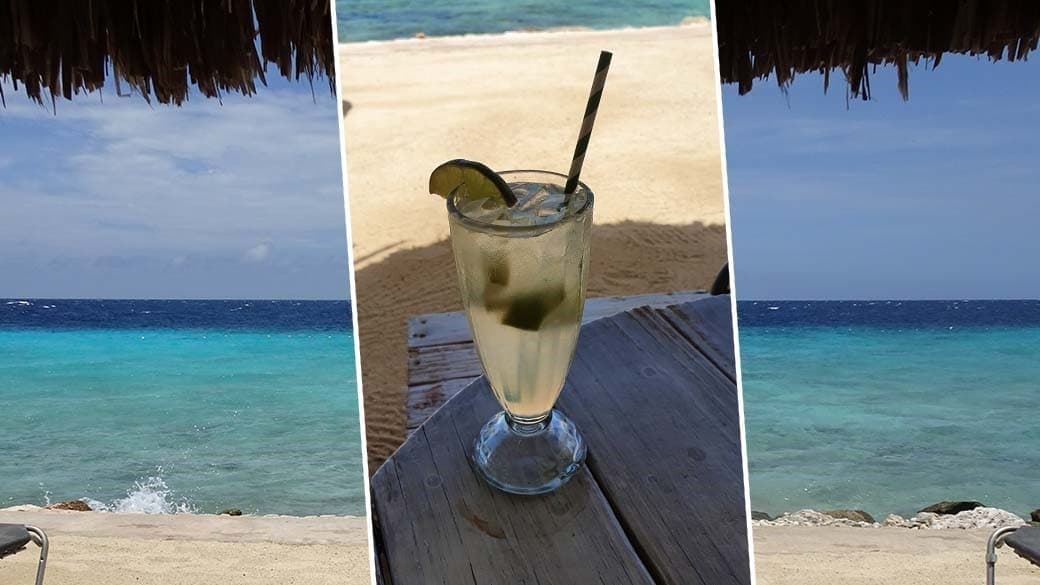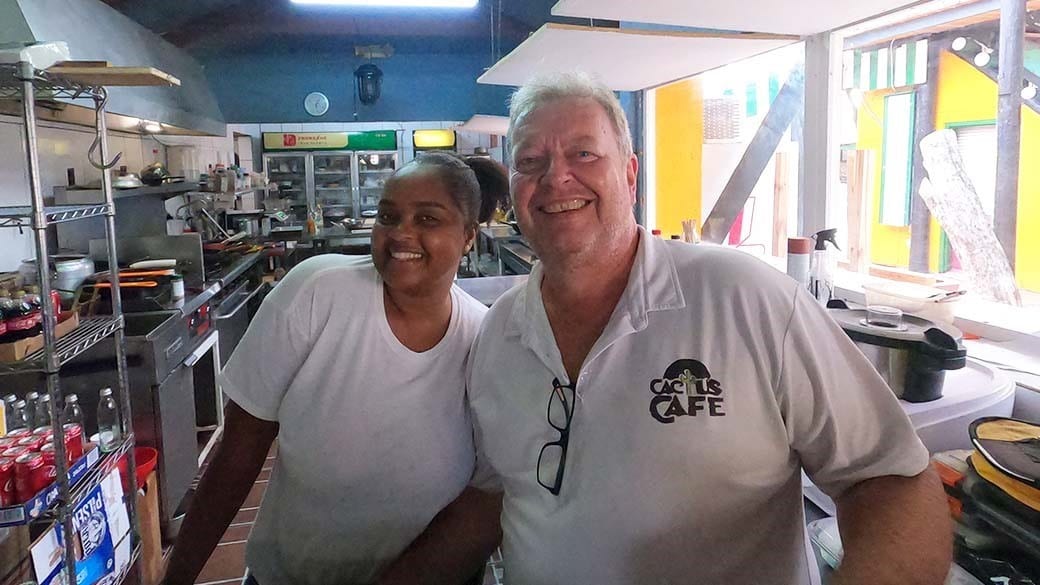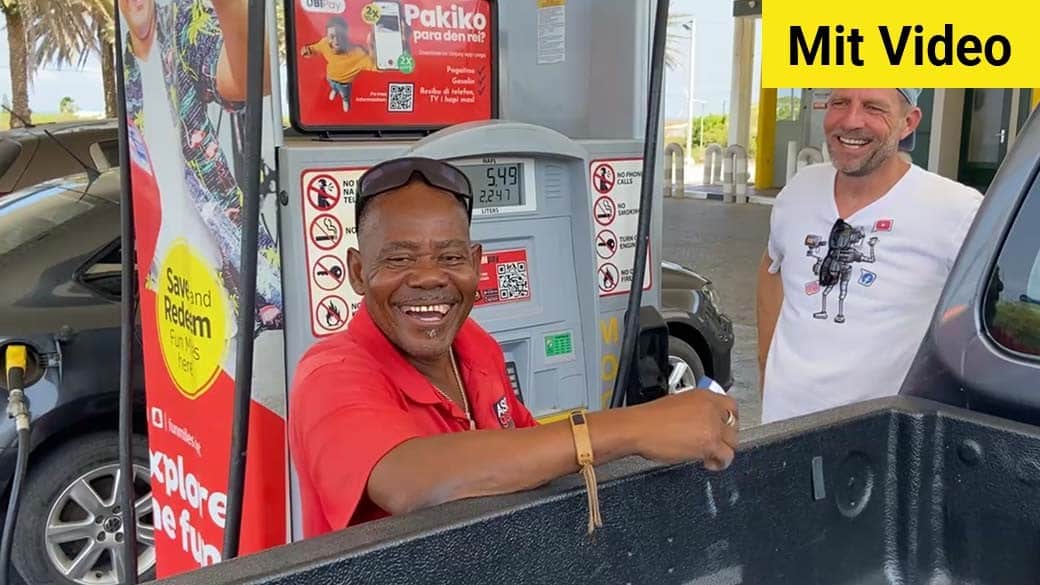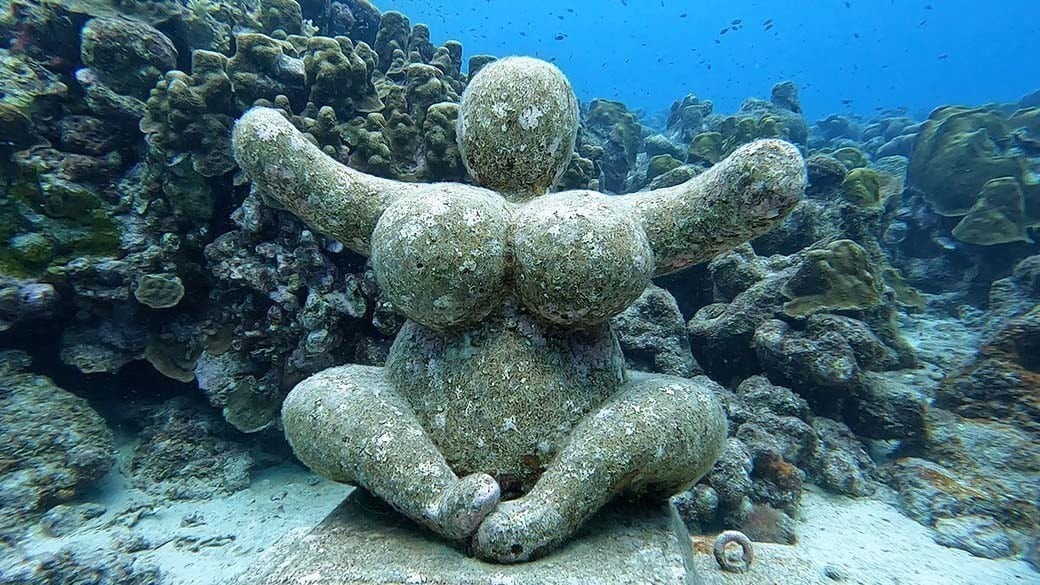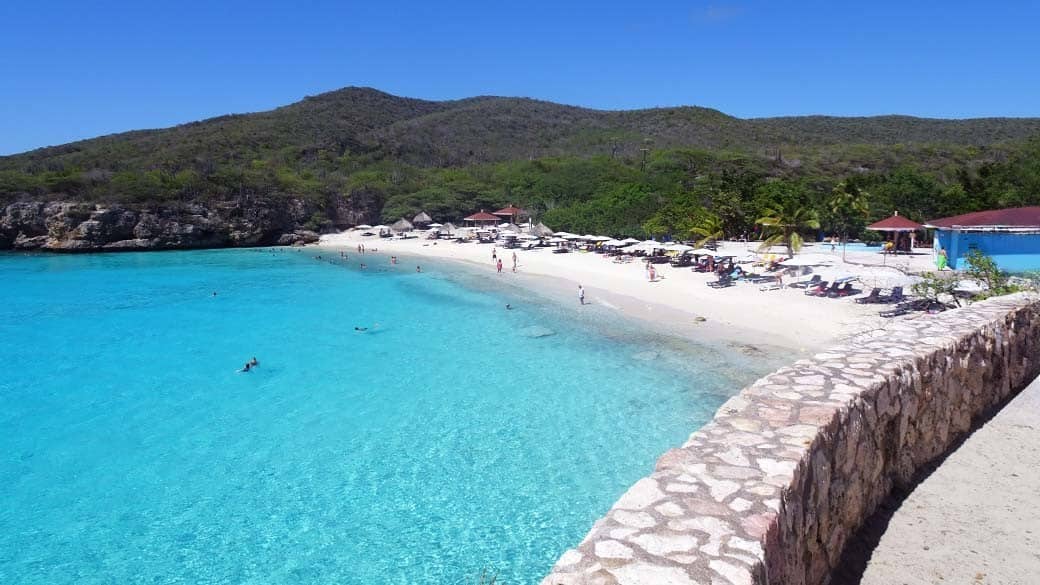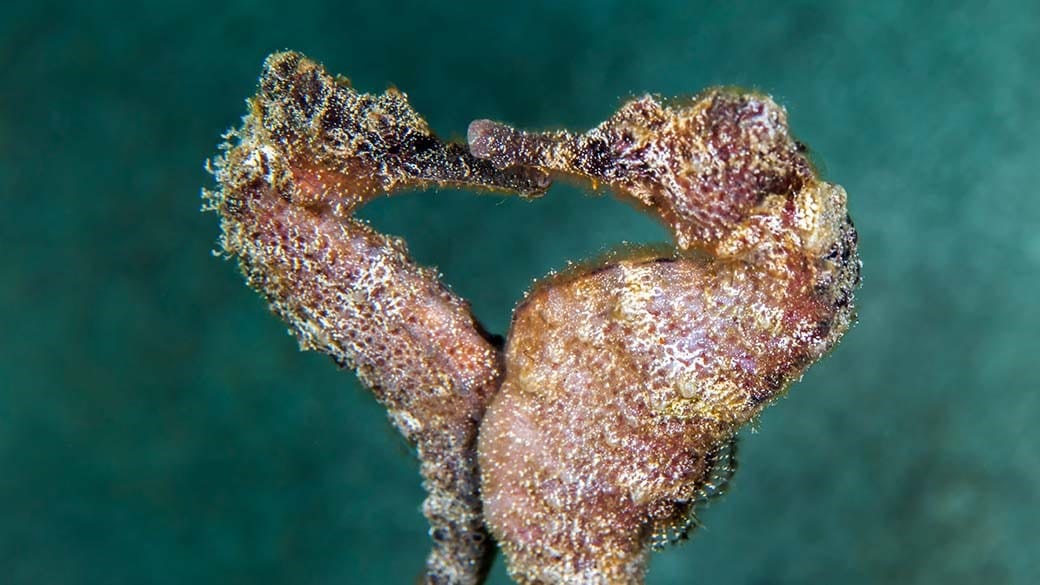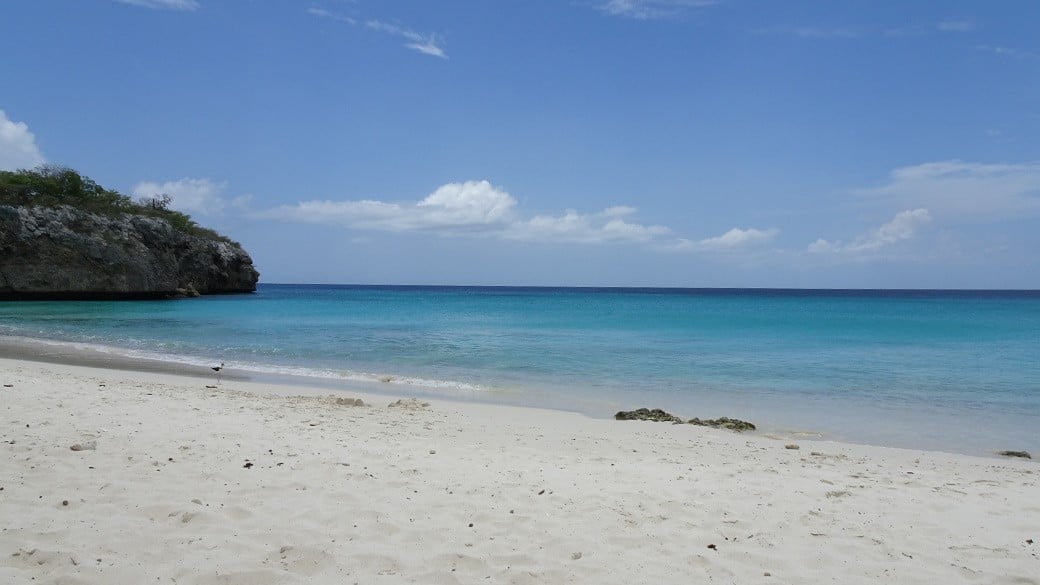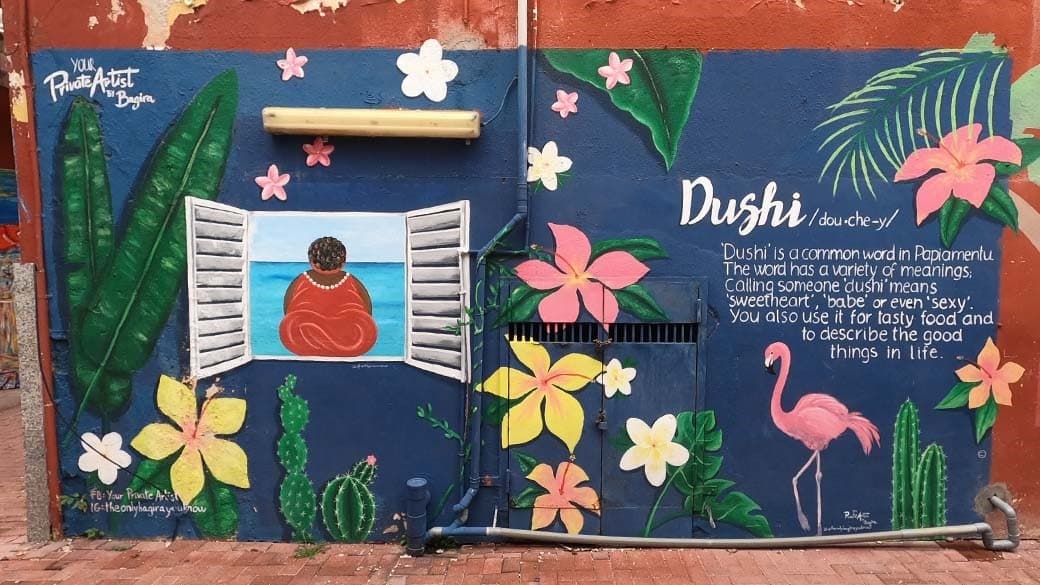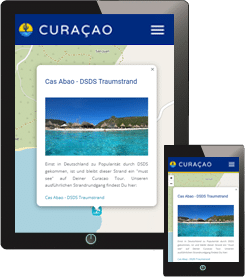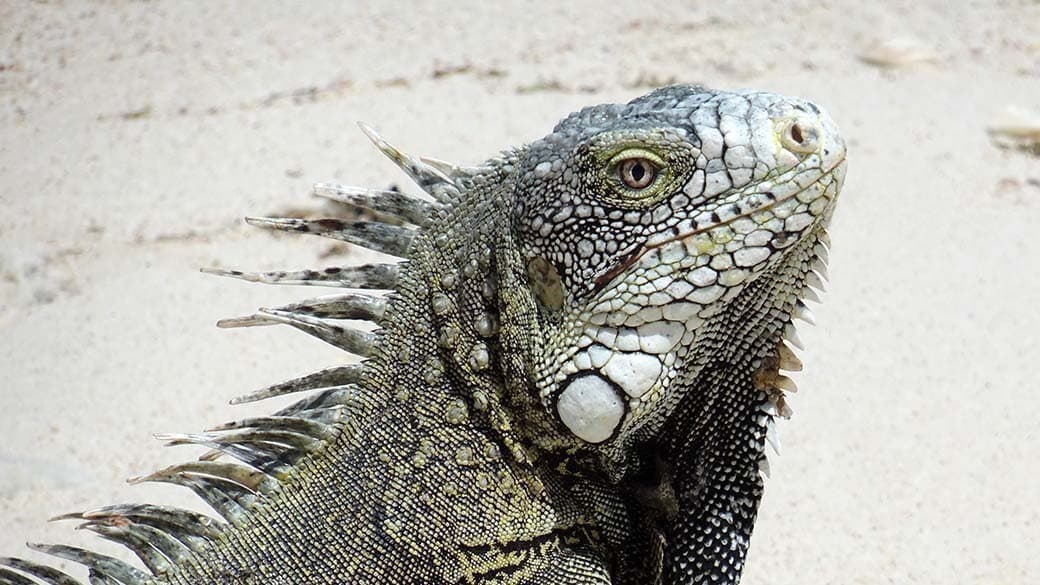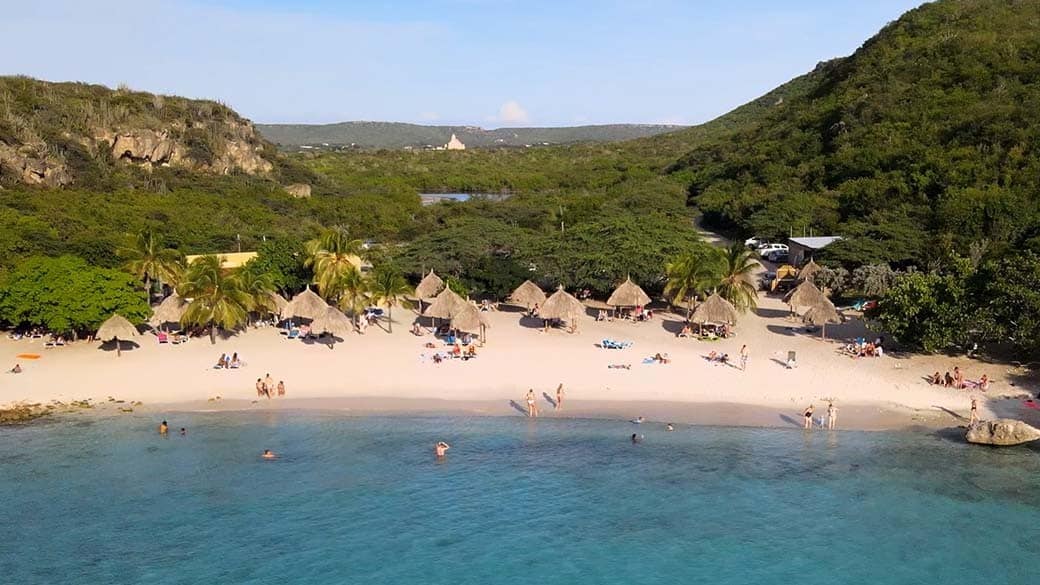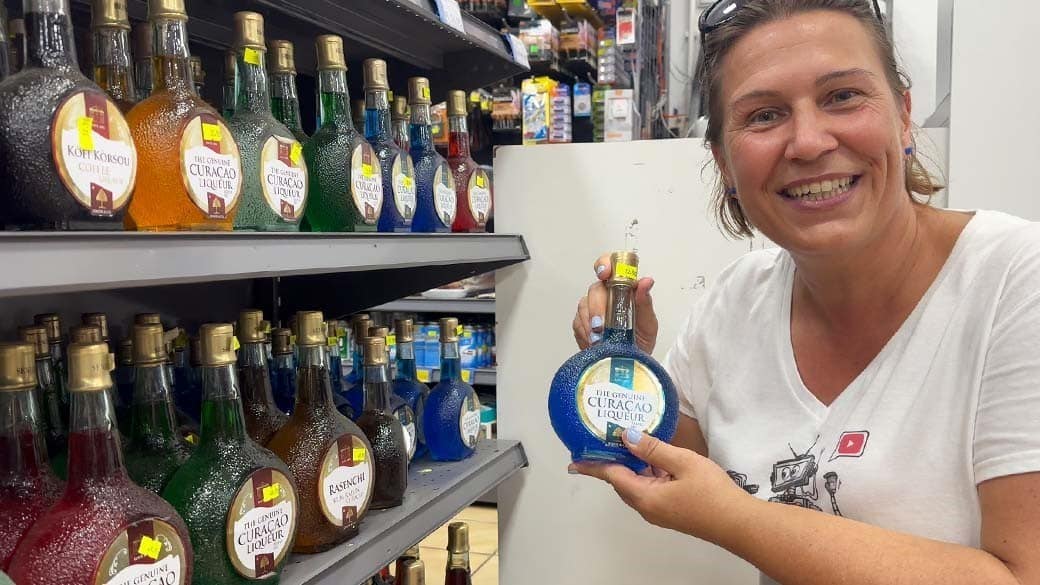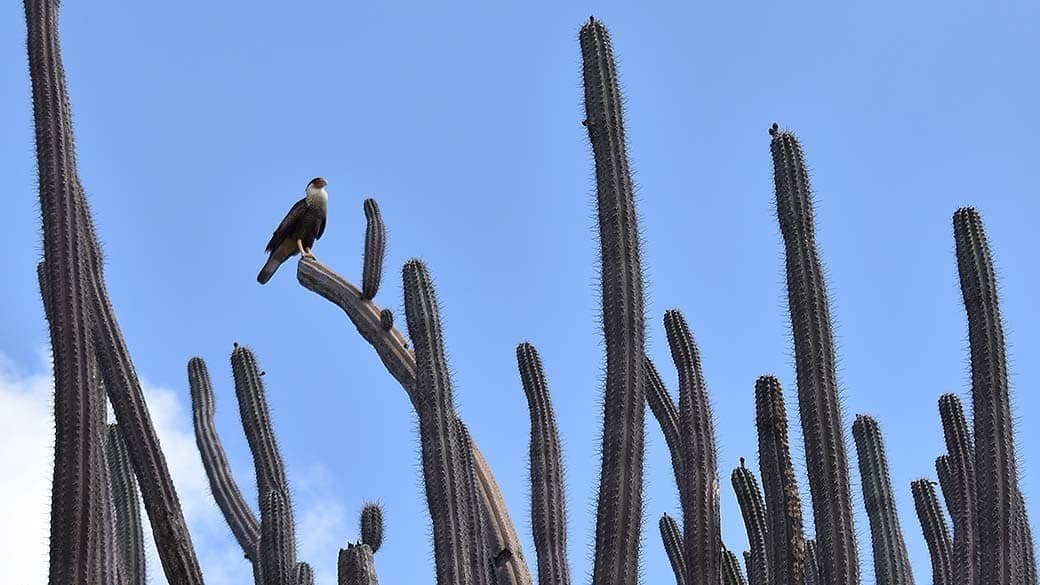Weather Forecast: Summer all Year
The best time to travel Curacao? Always!
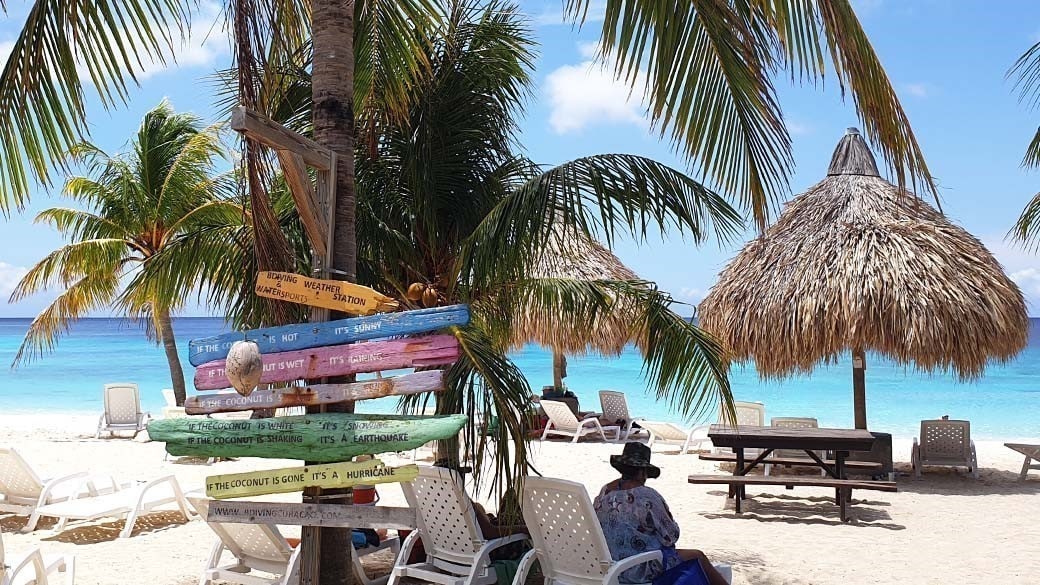
Turquoise waters, endless blue skies, and constant sunshine—that’s Curacao in a nutshell.
To brighten my mood, quite literally, Maike added Willemstad in Curacao to her weather app under “My Locations.” No matter when she checks the forecast, it’s always around 30°C during the day, 27°C at night, a few light clouds, and zero chance of rain. If you’re planning a trip to Curacao, the weather is one thing you won’t need to worry about.
Summer all year long
The German Weather Service defines a summer day as a day where the maximum air temperature is ≥ 25°C. By this standard, in Curacao experiences only summer days, as temperatures are always at least 25°C, even at night. Throughout the year, temperatures range from a warm 25°C to a hot 32°C. Therefore, any time is the best time to visit – 365 days a year. This is confirmed by the consistent high and low temperatures throughout the year:


To switch between Celsius and Fahrenheit, move the slider in the graph left or right.
Weather forecast for Curacao: 365 days sunny, barely any rain
The ABC Islands are known as the driest in the Caribbean – rainfall is significantly lower here than in other regions. While Curacao does have seasons and a so-called rainy season, it’s nothing like what you’d experience in Europe or even other sunny travel destinations around the world.
The rainy season, which typically lasts from October to January or February, is marked by short, occasional showers, usually at night, while the days remain predominantly sunny. However, the annual rainfall on the island averages only 570 mm. This means you can expect 8-9 hours of sunshine every day. Yay! There is almost no rain in August and September, which are the hottest months.
What we noticed during our visits at different times of the year were the changes in the landscape:
In summer, the landscape is much drier – it looks like something out of a western movie or the edge of a desert, with thorny bushes and cacti… but with bearable temperatures.
During rainy season the landscape becomes greener, lush and more vibrant. Even the cacti take on a richer green and many plants bloom. An occasional shower may catch you off guard, but you can be sure it won’t last long. The sun comes out quickly and then nature puts on a spectacular show – the ground starts to steam as it is still quite warm (around 27°C) and everything is heated up.
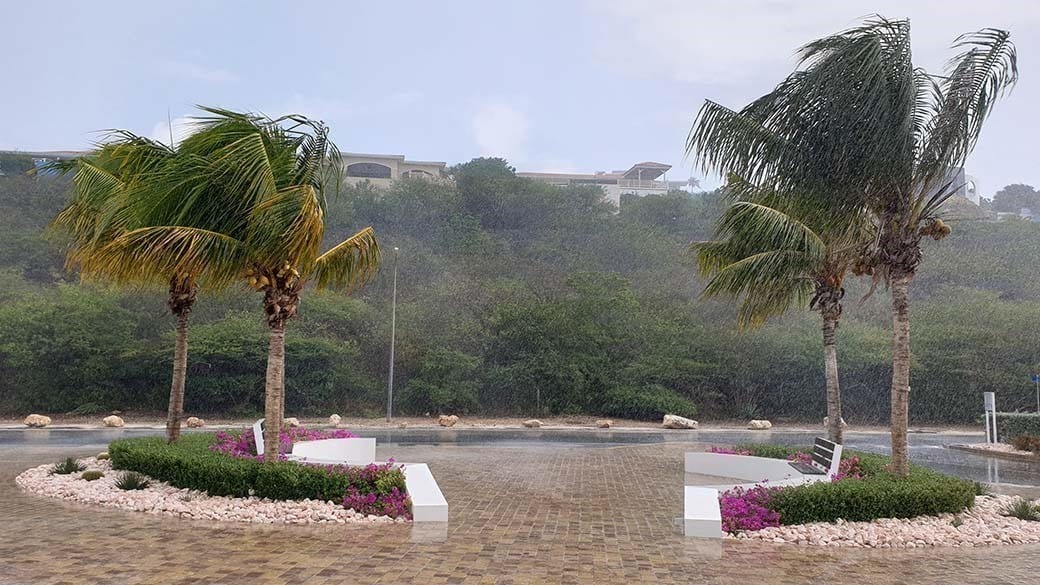
While it is still raining, the sky is already blue again and sunshine is in sight
Air, land, but what about the water?
Not only is the weather warm throughout the year, but so is the water. The average water temperature is between 26°C and 28°C, so sometimes there’s hardly any temperature difference between air and sea. Whether it’s spring, summer, fall or winter, you can swim, snorkel or dive comfortably in the Caribbean sea all year round. And, in Curacao you have over 35 beaches to choose from. Now, doesn’t that sound great?
You might also be surprised by the water temperature when you pour tap water. This is because Curacao’s drinking water comes from desalination plants, so regular tap water is about 27°C warm and of excellent drinking quality. Drinking tap water in the tropics? Yes, you heard it right: In Curacao, you can usually drink the tap water without having to worry about it.
This adds to Curacao’s appeal as a year-round destination. We were curious and decided to dig deeper into the water supply, which led us to write two dedicated blog articles – one about drinking water and the other about desalination in Curacao.
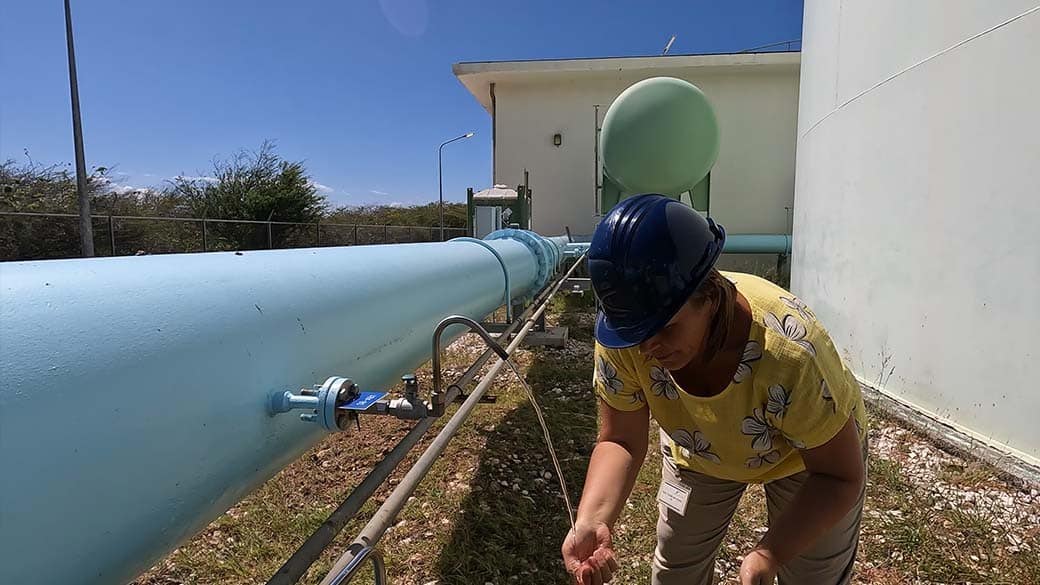
Maike tries the freshest drinking water from the tap at the supplier Aqualectra
When the weather goes off script: tips and insights
The tropical heat in Curacao is absolutely bearable, thanks in large part to the ever-present trade winds. However, when there’s no wind at all, something’s off. In September 2017 when Hurricane Irma was raging in the northern Caribbean, we’ve been on Curacao and it was in complete calm – no rain, no wind, nothing. The heat was intense, and even the slightest movement led to sweat. During those scorching days, we did very little and stayed by the beach, enjoying the water. On our return flight we had to take a detour due to the hurricane situation: the direct route north was not possible, so we flew out of the Caribbean heading east – but this was a minor inconvenience given the circumstances.
Curacao, along with the other ABC Islands, is fortunately not in the hurricane belt, making it less prone to such storms. These islands also serve as a base for aid operations, as was the case in 2017 when they coordinated assistance for affected areas from the Netherlands.
Another irregularity we know of from a friend who lived on the island for several years, was a Tropical Depression, which brought several days of rain—a rare occurrence for Curacao. She told us, Crossing the Queen Juliana Bridge during that time was quite an adventure.
The bridge, rising 56 meters over Sint Annabaai, offers spectacular views on Willemstad, though stopping is prohibited (you can nonetheless open the windows and enjoy the view 😉 but beware the wind in those heights) and is characterized by its steep incline – Maike always feels like she’s on a roller coaster ride.

Queen Juliana Bridge in Willemstad
Beware: Heavy but infrequent rain showers can create large puddles and slow-moving water on uneven roads, especially in Curacao, making driving challenging. Combined with salt, sand, and dust, the roads can easily become slippery. Another pro-tip: during rain, the windows of our rental car fogged up quickly from the inside. Keeping the side windows slightly open during rain to balance the internal and external temperatures and humidity worked well for us.
Better safe than sorry: local weather forecast
To avoid weather surprises, you can get comprehensive information about the local weather from Meteo Curacao. The website, officially called the Meteorological Department Curacao, is operated by the Ministry of Traffic, Transport, and Urban Planning. Here, you’ll find not only the local weather forecast but also sunrise and sunset times, tides, and wave heights. Official weather warnings may also be posted here. We got this awesome tip from Mike, the former manager of Landhuis Ascencion, and we’re happy to share the link with you:
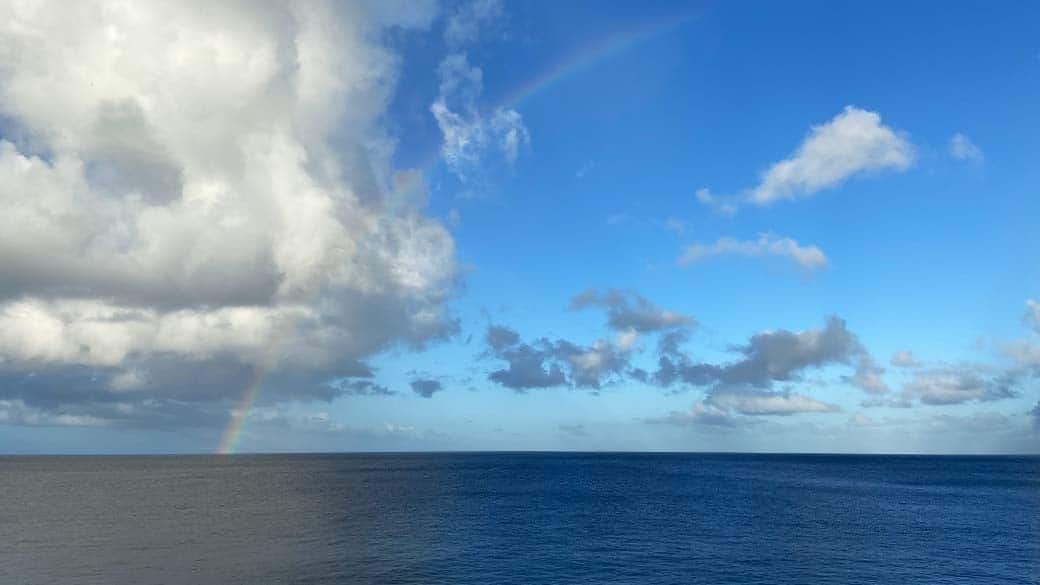
Weather phenomenon rainbow over the sea
Weather Stations in Curacao-Style
Curacao wouldn’t be Curacao without its charming, island-style way to check the weather: coconut weather stations. You can find them at some of the most picturesque beaches on the island, like Cas Abou (see cover photo) and Porto Mari. We also spotted one at Santa Barbara Beach a while back, but we’re not sure if it’s still there. If you’re staying at the Sandals Royal Curacao Resort, maybe you are curious and want to check it out.
If you know of any other beaches on the island with these coconut weather stations, or took a photo of such a quirky weather station from somewhere else in the world, let us know, we’d love to add them here. You can reach us via the comment section or email us at info@relaxedcuracao.com.
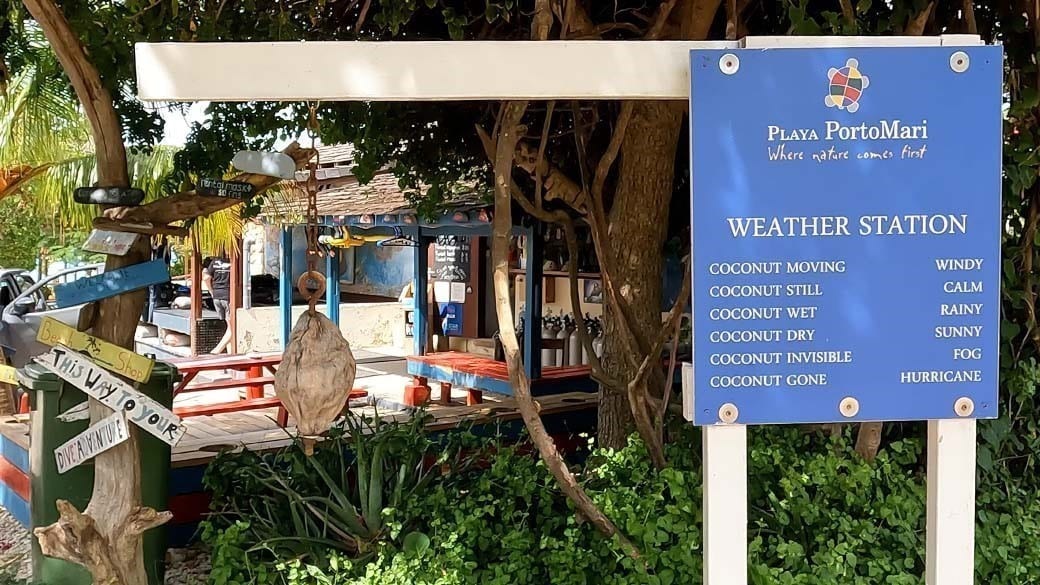
Coconut weather station at Porto Mari beach on Curacao
Do you know the answer? We collected 100+ entertaining questions about Curacao. Have fun!
Quiz Question
What is Chobolobo known for?Answer
Chobolobo is a Landhuis and at the same time the only true Blue Curacao liqueur factory.
The famous blue liqueur has been produced for 115 years from the peel of the Laraha orange, which only grows on Aruba and Curacao. This fact and the production in a single, ancient copper kettle limit the quantities that can be produced each year.
There are many copies and liqueurs based on oranges, but only one original Blue Curacao.
Does it have what it takes to become a national drink? We’ve looked into it in a blog article.
Do you like more? Here is another post you might be interested in:
If you enjoyed this article, we would be very happy if you share it with your friends on social media. Thank you very much!
Would you like more tips to make your vacation on Curacao even more enjoyable? In our relaxed travel and shopping sections, we explain how. Get to know the flora and fauna in the nature category, find your favorite beach, go snorkeling and diving, and enjoy local delicacies at our suggestions for restaurants and bars.
Weather Forecast: Summer all Year
The best time to travel Curacao? Always!

Turquoise waters, endless blue skies, and constant sunshine—that’s Curacao in a nutshell.
To brighten my mood, quite literally, Maike added Willemstad in Curacao to her weather app under “My Locations.” No matter when she checks the forecast, it’s always around 30°C during the day, 27°C at night, a few light clouds, and zero chance of rain. If you’re planning a trip to Curacao, the weather is one thing you won’t need to worry about.
Summer all year long
The German Weather Service defines a summer day as a day where the maximum air temperature is ≥ 25°C. By this standard, in Curacao experiences only summer days, as temperatures are always at least 25°C, even at night. Throughout the year, temperatures range from a warm 25°C to a hot 32°C. Therefore, any time is the best time to visit – 365 days a year. This is confirmed by the consistent high and low temperatures throughout the year:


To switch between Celsius and Fahrenheit, move the slider in the graph left or right.
Weather forecast for Curacao: 365 days sunny, barely any rain
The ABC Islands are known as the driest in the Caribbean – rainfall is significantly lower here than in other regions. While Curacao does have seasons and a so-called rainy season, it’s nothing like what you’d experience in Europe or even other sunny travel destinations around the world.
The rainy season, which typically lasts from October to January or February, is marked by short, occasional showers, usually at night, while the days remain predominantly sunny. However, the annual rainfall on the island averages only 570 mm. This means you can expect 8-9 hours of sunshine every day. Yay! There is almost no rain in August and September, which are the hottest months.
What we noticed during our visits at different times of the year were the changes in the landscape:
In summer, the landscape is much drier – it looks like something out of a western movie or the edge of a desert, with thorny bushes and cacti… but with bearable temperatures.
During rainy season the landscape becomes greener, lush and more vibrant. Even the cacti take on a richer green and many plants bloom. An occasional shower may catch you off guard, but you can be sure it won’t last long. The sun comes out quickly and then nature puts on a spectacular show – the ground starts to steam as it is still quite warm (around 27°C) and everything is heated up.

While it is still raining, the sky is already blue again and sunshine is in sight
Air, land, but what about the water?
Not only is the weather warm throughout the year, but so is the water. The average water temperature is between 26°C and 28°C, so sometimes there’s hardly any temperature difference between air and sea. Whether it’s spring, summer, fall or winter, you can swim, snorkel or dive comfortably in the Caribbean sea all year round. And, in Curacao you have over 35 beaches to choose from. Now, doesn’t that sound great?
You might also be surprised by the water temperature when you pour tap water. This is because Curacao’s drinking water comes from desalination plants, so regular tap water is about 27°C warm and of excellent drinking quality. Drinking tap water in the tropics? Yes, you heard it right: In Curacao, you can usually drink the tap water without having to worry about it.
This adds to Curacao’s appeal as a year-round destination. We were curious and decided to dig deeper into the water supply, which led us to write two dedicated blog articles – one about drinking water and the other about desalination in Curacao.

Maike tries the freshest drinking water from the tap at the supplier Aqualectra
When the weather goes off script: tips and insights
The tropical heat in Curacao is absolutely bearable, thanks in large part to the ever-present trade winds. However, when there’s no wind at all, something’s off. In September 2017 when Hurricane Irma was raging in the northern Caribbean, we’ve been on Curacao and it was in complete calm – no rain, no wind, nothing. The heat was intense, and even the slightest movement led to sweat. During those scorching days, we did very little and stayed by the beach, enjoying the water. On our return flight we had to take a detour due to the hurricane situation: the direct route north was not possible, so we flew out of the Caribbean heading east – but this was a minor inconvenience given the circumstances.
Curacao, along with the other ABC Islands, is fortunately not in the hurricane belt, making it less prone to such storms. These islands also serve as a base for aid operations, as was the case in 2017 when they coordinated assistance for affected areas from the Netherlands.
Another irregularity we know of from a friend who lived on the island for several years, was a Tropical Depression, which brought several days of rain—a rare occurrence for Curacao. She told us, Crossing the Queen Juliana Bridge during that time was quite an adventure.
The bridge, rising 56 meters over Sint Annabaai, offers spectacular views on Willemstad, though stopping is prohibited (you can nonetheless open the windows and enjoy the view 😉 but beware the wind in those heights) and is characterized by its steep incline – Maike always feels like she’s on a roller coaster ride.

Queen Juliana Bridge in Willemstad
Beware: Heavy but infrequent rain showers can create large puddles and slow-moving water on uneven roads, especially in Curacao, making driving challenging. Combined with salt, sand, and dust, the roads can easily become slippery. Another pro-tip: during rain, the windows of our rental car fogged up quickly from the inside. Keeping the side windows slightly open during rain to balance the internal and external temperatures and humidity worked well for us.
Better safe than sorry: local weather forecast
To avoid weather surprises, you can get comprehensive information about the local weather from Meteo Curacao. The website, officially called the Meteorological Department Curacao, is operated by the Ministry of Traffic, Transport, and Urban Planning. Here, you’ll find not only the local weather forecast but also sunrise and sunset times, tides, and wave heights. Official weather warnings may also be posted here. We got this awesome tip from Mike, the former manager of Landhuis Ascencion, and we’re happy to share the link with you:

Weather phenomenon rainbow over the sea
Weather Stations in Curacao-Style
Curacao wouldn’t be Curacao without its charming, island-style way to check the weather: coconut weather stations. You can find them at some of the most picturesque beaches on the island, like Cas Abou (see cover photo) and Porto Mari. We also spotted one at Santa Barbara Beach a while back, but we’re not sure if it’s still there. If you’re staying at the Sandals Royal Curacao Resort, maybe you are curious and want to check it out.
If you know of any other beaches on the island with these coconut weather stations, or took a photo of such a quirky weather station from somewhere else in the world, let us know, we’d love to add them here. You can reach us via the comment section or email us at info@relaxedcuracao.com.

Coconut weather station at Porto Mari beach on Curacao
Our reading recommendation for you:
Curacao is alive and things are always changing. What has changed since our last visit? How is your experience? Would you please share your personal experiences with us? Feel free to write your comment under this article and follow us on our social media channels. There you can spontaneously share your personal impressions with us and our community - "sharing is caring". We look forward to your contribution and every new follower!
Leave A Comment
Quiz Question
What is Chobolobo known for?Answer
Chobolobo is a Landhuis and at the same time the only true Blue Curacao liqueur factory.
The famous blue liqueur has been produced for 115 years from the peel of the Laraha orange, which only grows on Aruba and Curacao. This fact and the production in a single, ancient copper kettle limit the quantities that can be produced each year.
There are many copies and liqueurs based on oranges, but only one original Blue Curacao.
Does it have what it takes to become a national drink? We’ve looked into it in a blog article.
#withus - our articles at your fingertips on a common map - try it!


